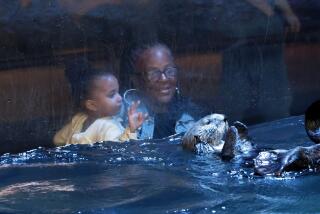Changing Sex a Part of Oyster Life Cycle
- Share via
HILTON HEAD, S.C. — If oysters have feelings, loneliness probably is not one of them.
Unlike other animals, this creature has no need for a mate. It has all the sexual equipment it needs right under its shell. The oyster is male in youth and female for the greater part of its life, local naturalists say.
“For a dullard stick-in-the-mud, the oyster had a somewhat kinky sex life,” naturalist Tom Smith has said.
When they are spawning, they are stuffed with both eggs and sperm, he said. A female can produce half a billion eggs a year and a male three billion sperm.
Oysters usually spend their first spawning season as males and then change radically, he said. Testes become ovaries and for the rest of their life they are egg-making machines. The smaller oysters are usually male and the larger ones female, he said.
Oysters are most productive between their third and seventh years and can live up to 12 years, he said.
Of the multitude of eggs produced, some are fertilized. “But most will become part of the planktonic soup which feeds so many creatures,” Smith said.
The displaced larvae form shells and free-float for two to four weeks, naturalist Todd Ballantine said in his book “Woodland Walks.” The heavier, shelled “spat” sink to the sea floor and grope for a solid home site.
The oysters can grow to a length of 10 inches, adding on shell layers that resemble roofing shingles, Ballantine said. They feed themselves by slurping up 3.5 gallons per hour of watery “plankton soup,” he said. Their razor sharp shells snap shut to expel wastes with a noticeable bubbly stream, he said.
Oysters mature in five years if they escape raccoons, birds, starfish and oysterdrill snails.





